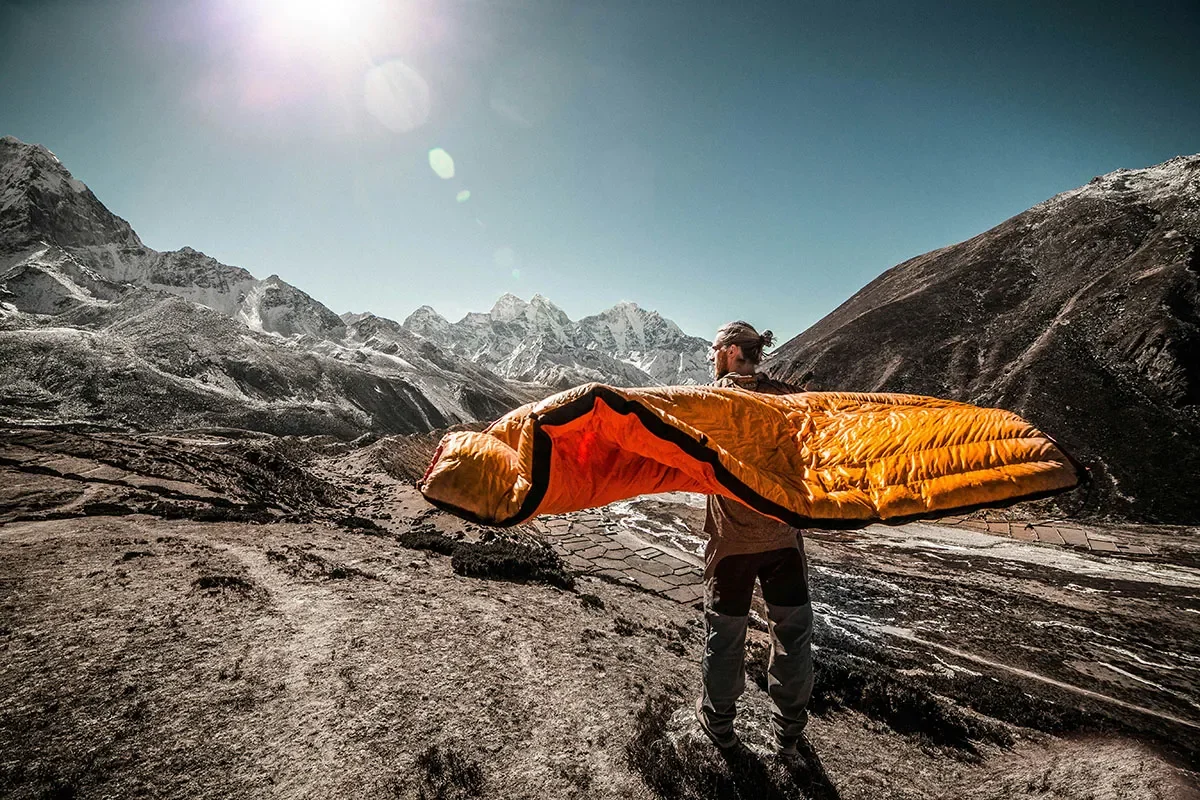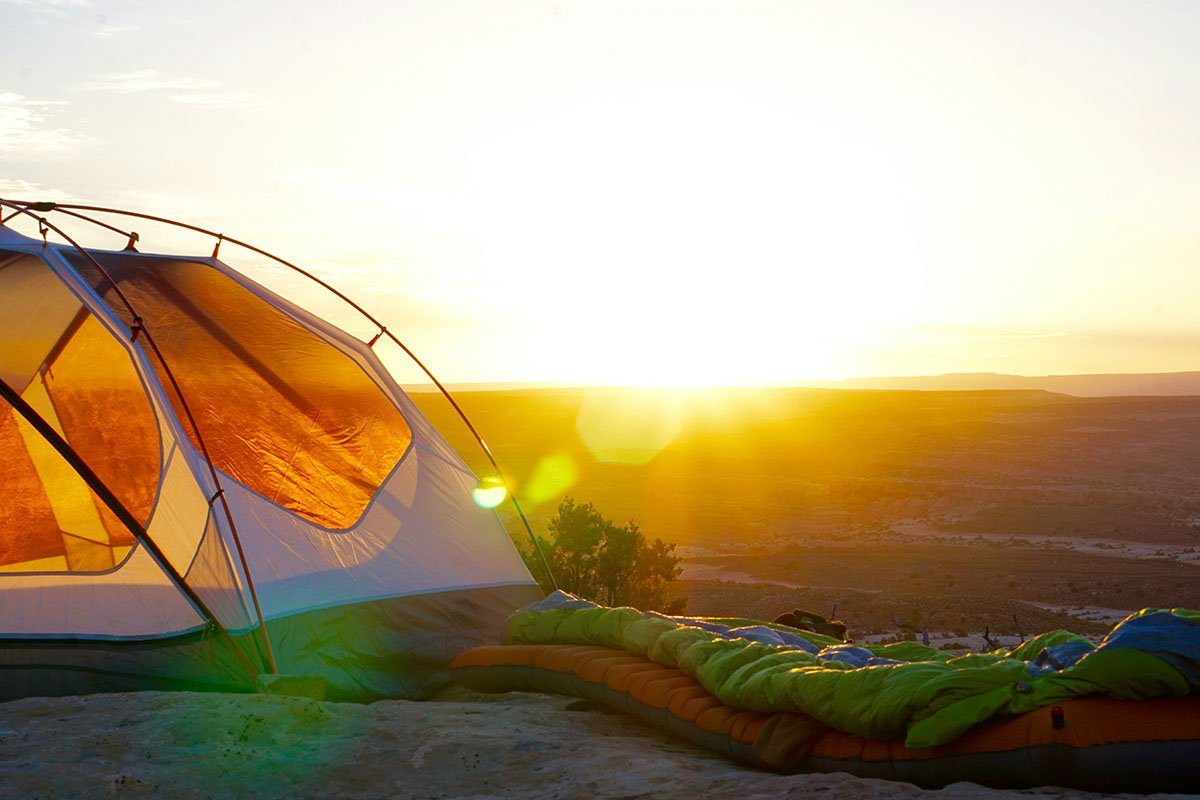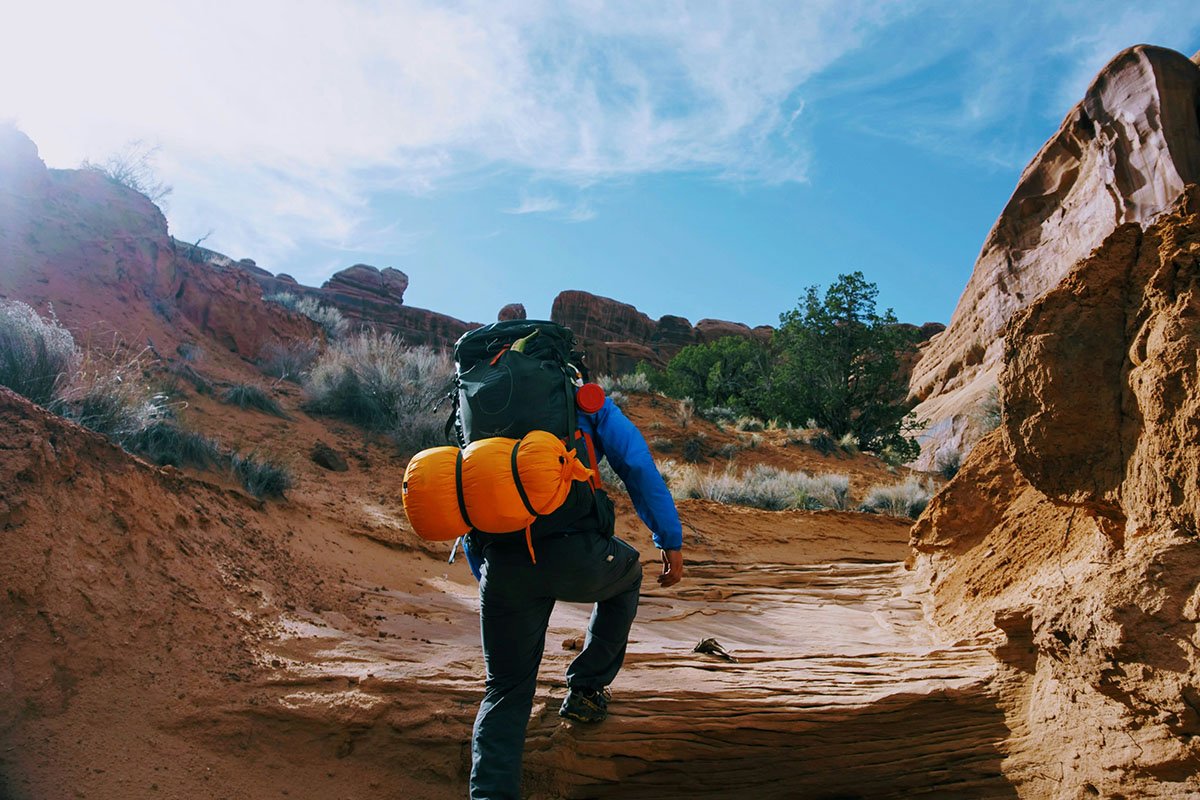Quilt vs. Sleeping Bag: What’s Best for Backpacking?
Choosing the right bedding for your outdoors adventure is a key decision, one that will impact your comfort, warmth, and happiness while you’re exploring new places.
There are several styles of sleep system out there. Will you go for the simplicity of a quilt or the cocoon-like embrace of a sleeping bag?
We’re here to break down the similarities and differences of both sleeping bags and quilts in terms of their usefulness for various outdoors experiences.
Let’s find out more.
This post contains affiliate links. Outdoors.com may earn a commission when you make a purchase through these links. Thank you for your support.
Design and Structure
One of the key noticeable differences between a quilt and a sleeping bag is the design. A backpacking quilt has a simple structure that does not feature a hood.
It can be unzipped to create a traditional blanket shape and many campers like it for the fact you can move around and change positions in order to regulate temperature. There is often a drawstring at one end or both ends of the quilt that can be loosened or tightened depending on the conditions.
Sleeping bags come in several styles, but one of the most popular styles for camping and backpacking is the mummy bag. This cocoon-style sleeping bag usually features a zipper along one side or sometimes all the way around.
It is designed to keep the person’s body weight enclosed inside the bag, allowing for maximum warmth and coverage.
Insulation

Both quilts and sleeping bags typically use down or synthetic insulation to provide warmth.
Quilts typically have insulation on the top side only, not on the underside. They are designed to be used with a sleeping pad (more on this later), which provides the extra insulation that you need.
Traditional sleeping bags provide insulation from all sides, including the top, bottom, and sides. They offer superior insulation compared to quilts, making them suitable for colder climates and winter camping.
Many sleeping bags with higher fill power down or advanced synthetic insulation provide exceptional warmth-to-weight ratios.
Down vs Synthetic Insulation
Budget sleeping bags usually feature synthetic insulation, made from polyester fibers. Synthetic insulation is water resistant, durable, and quick drying, which is useful for camping outdoors.
Down insulation keeps you very warm, but it can be a little more expensive. It is lightweight, compressible, and suitable for backpacking.
Learn more about down vs synthetic insulation.
Temperature Ratings
To find the right sleeping bag for the conditions you will encounter, it’s important to check its temperature rating.
The sleeping bag manufacturer will note the lowest temperature that the sleeping bag should be used in, based on laboratory testing and standardized methodologies by European Norm (EN) and International Organization for Standardization (ISO).
It will also note whether it is a 3-season or a 4-season sleeping bag. Choose a sleeping bag with a temperature that matches or is slightly lower than the lowest temperature you will experience on your trip to ensure you stay warm enough.
Quilts typically do not follow the same temperature rating process as sleeping bags do. Quilts are more versatile and customizable in terms of insulation and coverage, so instead of a fixed temperature rating, brands often provide a temperature range.
This information is based on the materials used, the type of insulation, the fill power (for down quilts), and the overall design of the quilt.
Weight and Packability

It is important to take note of the weight and packed size if you are planning to use the sleeping bag or quilt on a backpacking trip, or if you will be carrying it for long periods of time.
Quilts are known for their lightweight and compressible nature. The absence of zippers and excess fabric make them easy to pack.
When choosing a sleeping bag, the weight and packability will depend on a few factors, including fill power, insulation, and shell material. Some sleeping bags may prioritize warmth over weight, which makes them a bit bulkier for packing. Ultralight sleeping bags offer the best of both worlds, saving you extra weight and keeping you cozy.
For both quilts and sleeping bags, you should consider choosing one that is easy to roll or stuff into a stuff sack. Check the dimensions and read reviews to find user experiences with packing the product.
Sleeping Comfort
If you value the freedom to move around when you’re sleeping, then quilts offer a versatile option that allows you to create your perfect sleeping environment. You can layer quilts, use them for sleeping in a hammock, or use them for lounging by a campfire.
For minimalist backpackers, thru-hikers, and warmer nights in the summer, an ultralight quilt is a great choice.
For chilly conditions or mountaineering, a warm sleeping bag is likely to be more suitable at keeping cold air at bay. Specifically designed for warmth and insulation, sleeping bags trap in warmth to protect you through sub-zero nights on the trails.
You can find ultralight and packable options to suit any kind of adventure, but due to the narrow body shape, your movement is a little bit more restricted in a sleeping bag.
Recommendations:
Ease of Set up

Both options have very easy set ups, but we reckon the sleeping bag is the least complicated in terms of set up. When you’re camping or backpacking, you’ll have other pieces of gear, such as a tent, to set up, so you don’t really need to worry much about your sleeping bag or quilt.
For a sleeping bag, all you need to do is unpack it, shake it out, and lay it down, and you’re ready to hop inside. A quilt might need one more extra step, which is to attach it to the sleeping pad by using clips or straps.
Don’t Forget About a Sleeping Pad
A good night’s sleep is essential when you’re out enjoying the great outdoors. A few extra pieces of gear can really help to create a comfortable home away from home.
One of the most important things is a sleeping pad or a sleeping mat. Whether you decide to buy a sleeping bag or a quilt, you will always need a sleeping pad to add some extra cushioning and insulation.
A sleeping pad provides a layer between yourself and the ground that helps retain the body’s warmth and prevents it from being absorbed by cold ground. Quilts often feature straps or clips that secure them to the sleeping pad, preventing them from shifting during sleep.
It will also help support your back on uneven ground, protecting you from moisture, dirt, insects, or other potential hazards. A sleeping pad is a must-have item.
Recommendation:
Quilt or Sleeping Bag, Which Will You Choose?

If you’re looking for an easily customizable sleeping solution that allows freedom of movement and no restrictions while you’re sleeping, a lightweight quilt is the choice for you.
However, if you’re exploring a cold destination and warmth is your number-one priority, it is probably best to go for a sleeping bag that is designed to handle low temperatures.
Now that you know the differences, you can find the perfect sleeping system to suit your needs.






